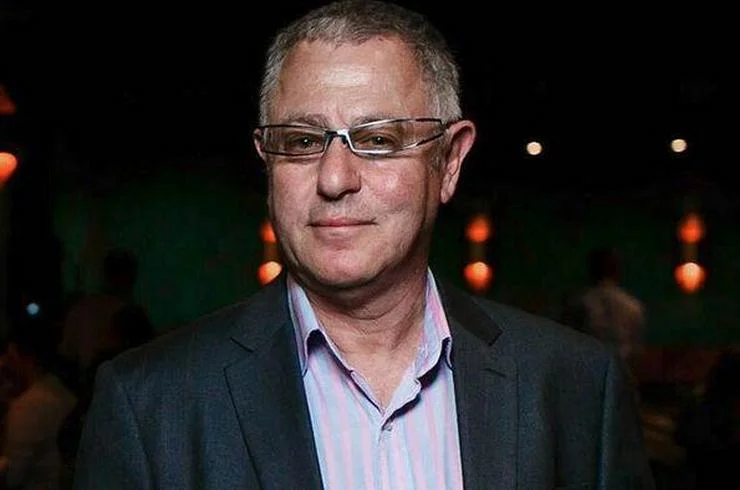In this episode of Uncorked, Polly Hammond reunites with longtime collaborator Robert Joseph—wine thinker, Meininger’s columnist, and co-founder of French brand Le Grand Noir. Together, they dig into the hard truths of wine marketing, from distribution headaches to labeling trends, and debate whether the industry is evolving quickly enough to survive in a profit-driven world.
From Wine Philosopher to Brand Builder
Known for his no-nonsense views on the wine business, Robert Joseph is more than a commentator—he’s co-creator of Le Grand Noir, a disruptor brand producing French wines designed to appeal to global drinkers. Alongside winemaker Hugh Ryman and designer Kevin Shaw, Joseph built a brand that many said wouldn’t work. “The French told us we were mad,” he says. “But we wanted to compete with Mondavi, with Yellow Tail—and that meant thinking about scale from day one.”
Their approach included creative partnerships with cooperatives, smart packaging, and early adoption of varietal labeling, long resisted in France. The result? A global wine brand sold in over 60 countries that continues to challenge conventions around appellations and wine quality.
Vin de France and the New Rules of Profitability
One of the most discussed topics in the episode is the rise of Vin de France, a category once dismissed by traditionalists but now booming. “It’s no longer the lowest rung,” Joseph explains. “It’s where innovation is happening—blends, single varietals, even slightly sweet rosés that don’t fit old AOC rules.”
Joseph’s own brand reflects this flexibility, with wines labeled as IGP, AOC, or Vin de France depending on the market’s needs. “We do what works for our drinkers,” he says. “We’re not making wine for wine writers—we’re making wine for consumers.”
Mistakes, Margins, and Marketing Misconceptions
Throughout the conversation, Joseph is refreshingly candid about his missteps—from label designs to bottle closures. “We tried screw caps on everything. The rosé tanked. So we went back to a cork lookalike.” Why? Because consumers shopping for a $25 wine experience—even at a $12 price point—expect it to look the part.
Distribution, he argues, is still wine’s biggest blind spot. “People forget to track depletions,” he says. “Selling wine to a distributor is just step one. If it’s not moving off shelves, you’re not in business.”
He also challenges the obsession with data. “Everyone quotes what they want to hear. Orange wine is up? Sure—but do you want to be the 18th entrant in a 12-brand market?” Instead, he urges brands to blend qualitative and quantitative insights—and to put someone on the ground in key markets, not just salespeople, but eyes and ears who can report back on what’s really working.
Prestige, Purpose, and Profit: Can We Have It All?
Polly and Robert explore the tension between fine wine, natural wine, and commercial wine—what Polly dubs the “Prestige, Purpose, and Profit” triangle. Can one brand succeed in more than one category? Joseph believes so. “Gallo’s doing it. Gerard Bertrand is doing it. The key is knowing who each wine is for.”
For smaller brands, that means being brutally honest about your target audience. “Your rosé isn’t competing with Burgundy,” Joseph says. “It’s competing with everything else in the consumer’s basket—beer, spirits, lifestyle choices.”
Branding, Bottles, and Disruptive Design
Robert is optimistic about the evolution of wine branding, particularly in regions like Provence and Languedoc. “Bottle shapes matter. Label design matters. And it’s not just about being pretty—it’s about signaling quality and value before the cork is even pulled.”
In a world where more consumers make wine decisions without tasting, packaging plays a critical role. “Consumers don’t read back labels,” he says. “You have to stop them in their tracks.”
Key Takeaways from Polly and Robert’s Conversation
- Consumer-first mindset is essential: Whether you’re a cooperative or a boutique producer, success comes from understanding what your drinkers actually want—not what tradition dictates.
- Distribution is make or break: Selling wine is only half the battle. Tracking depletion, managing relationships, and adapting to market feedback are critical for long-term success.
- Flexibility beats dogma: Joseph advocates for breaking free from appellation rigidity when it doesn’t serve the customer. Vin de France, IGP, AOC—use what works.
- Design is strategy: Bottle shape, closures, and label art are not just aesthetics—they’re tools to convey value, especially in competitive retail environments.
As Polly Hammond notes, Robert Joseph is never afraid to speak plainly about the wine industry’s biggest blind spots. With Le Grand Noir, he proves that innovation, scale, and consumer respect can go hand in hand. His advice to wine brands? “Don’t chase prestige for its own sake. Focus on being good—and being wanted.”
